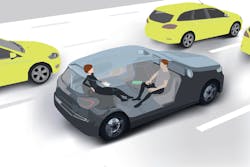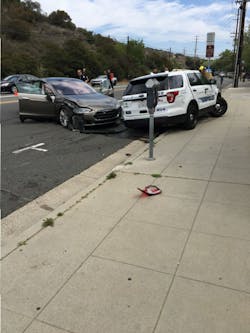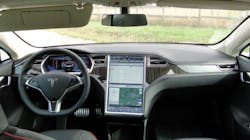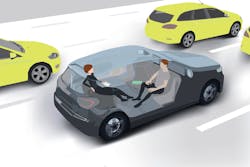Throughout history, brilliant scientific and engineering minds have invented revolutionary technologies to help better mankind: The wheel. The lightbulb. Airplanes.
With self-driving vehicles, we are now on the cusp of a true transportation revolution. Is society ready for robots/computers to drive us from point A to point B? Airplanes have had autopilot since 1914. We have had cruise control for our cars since the 1980s, where the throttle adjusts automatically. Some newer vehicles even have brake-assist features that slow down your car if you’re driving too close to someone in front of you.
Dozens of car manufacturers and tech companies are racing to bring their proprietary self-driving systems to market. Good for them. However, to truly reap the massive benefits that come with the autonomous vehicle revolution —e.g., saving 30,000 to 40,000 American lives lost per year in car crashes1 and $160 billion2 in lost economic productivity caused by traffic congestion—these vehicles will need to work together as a system.
A Tesla semi-autonomous vehicle, after running into a parked police car, in Laguna Beach, Calif.
But this innovation has not arrived…yet.
Connecting the vehicles inside a wireless network will allow them to talk to one another and act in unison whenever something unexpected happens. Say, for example, you’re driving down the freeway (or rather, your car is driving itself) in the number one lane (leftmost, or “fast” lane) at 65 miles per hour and your front right tire explodes. You need to merge to the right and safely pull over onto the shoulder before you lose control of the vehicle.
If there’s another self-driving car immediately to your right, not communicating with your car, you will be unable to merge to the right.
If both cars were inside the network, and this scenario had already been preprogrammed into an algorithm, the necessary vehicles would slowly move out of the way to make room for you and your car to move safely off to the side of the road. This is one of thousands of possible safety-related scenarios that need to be flushed out before any form of network goes live.
Trust will be key for humans to adopt self-driving tech.
To eliminate traffic congestion, we need to increase capacity along thousands of miles of existing roadway. How? By decreasing the spacing between car bumpers. Instead of the old “four-second” rule, where the safe distance between you and the car in front of you is equivalent to four seconds of distance (at 65 mph, this is about 95 ft per second, or 380 ft ± between cars). Rule of thumb: the maximum capacity of any given point on a standard freeway lane is about 2,000 vehicles per lane per hour (vplph). If the demand of vehicles is greater than 2,000 vplph, we get traffic congestion. Bumper to bumper. A very real form of waste that results in 6.9 billion delayed person-hours per year.3
However, if all vehicles were controlled by a network, we could decrease the spacing to something ridiculously small while still traveling at 65 mph. By reducing the distance between vehicles with self-driving systems, assuming all the kinks are worked out and this invention becomes feasible, the capacity of a given lane increases by a factor of about five. Reducing following distance will give a standard four-lane freeway the equivalent capacity of 20 lanes. This will reduce traffic congestion and potentially save $160 billion annually. But there’s a hefty risk associated with allowing computers to be in control of that many cars and trucks at once.
As we’ve unfortunately witnessed with recent successful hacking attempts at the NSA and major corporations, right now no computerized system is truly 100% impenetrable. If a network of vehicles were implemented using a centralized computer to control the cars and trucks, the threat of a terrorist attack is entirely possible.
The psychological, philosophical, social, economic, legal, and ethical issues associated with self-driving cars must be given serious debate before humans turn over the wheel to algorithms. (Image credit: AlealL/Getty Images)
Nevertheless, implementing a national self-driving network could eliminate fatal car crashes and traffic congestion anywhere—even in downtown Los Angeles. Imagine driving in pure safety from one side of L.A. to the other in five minutes, instead of two hours.
An invention like this would have tremendous humanitarian and economic benefits...but only if everything is 100% safe. If we can come up with a bulletproof, completely impenetrable digital fortress to house the command center that controls the vehicle network, we might have a chance at reaping these life-saving and fiscal benefits. By starting slow and implementing in phases maybe we can decentralize the system, allowing the cars to talk to one another without a centralized network. This may make it harder to hack for malicious reasons. Each individual vehicle would be at risk for hacking rather than one centralized system.
The point here is that we can engineer a solution—an invention, if you will. Set a goal and head straight toward the target. We need to bring in the best minds in all major fields of engineering (civil, mechanical, computer, etc.), math, and physics. Think outside of the box. Invent a way to truly make this happen. Human-controlled cars will eventually go the way of the dodo bird and horse-drawn carriage. Our economy will thank us. More importantly, so will all future generations of our great nation.




